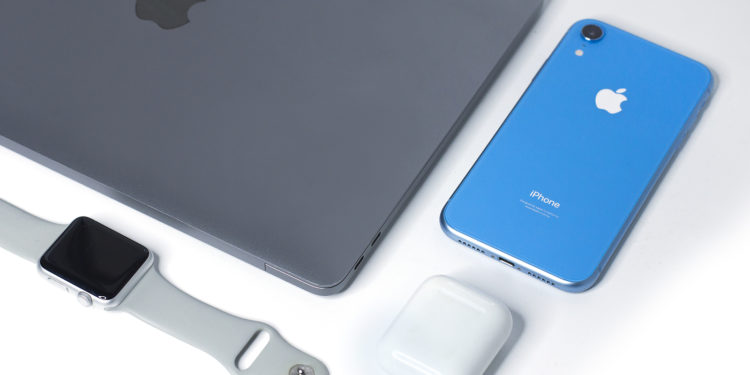How about a MacBook that could wirelessly charge an iPhone, iPad, or Apple Watch, for example? Apple seems to be at least interested in the idea, as a pair of new patents show.
New Apple patents reveal a MacBook that could wirelessly charge an iPhone, iPad, and Apple Watch. Specifically, they describe two-way charging coils that could be used to charge the MacBook itself but also to charge other devices through the MacBook. The patents also show an iPad that can charge an iPhone and an Apple Watch and follow a separate patent application for a MagSafe battery case that can charge both an iPhone and a pair of AirPods. The description states:
Some electronic devices contain one or more rechargeable batteries that may require an external power supply for charging. Often, these devices can be charged using a common or standardized electrical connector or cable. For example, some devices can be charged using a Universal Serial Bus ("USB") connector or cable. However, despite standardized connectors and cables, each device may require a separate or dedicated power supply for charging. In some cases, it may be inconvenient to use, store, and/or transport a separate power supply for each device.
MacBook & iPhone: Many users would be happy
These patents were also written in such a way as to cover the widest possible field of application. The functionality describes Apple does this as follows:
A portable electronic device comprising: a housing forming a back of the portable electronic device; a display coupled to the housing and forming a front of the portable electronic device that faces the back of the portable electronic device; a battery within the housing that supplies electrical power to the display; and an inductive transmitting coil disposed within the housing and between the display and the back of the housing, the inductive transmitting coil configured to wirelessly transmit power through the back of the housing to an external device disposed proximate the back of the housing.
The electronic devices may include inductive coils that may be configured to be in electrical communication with inductive coils of external electronic devices. In some embodiments, the electrically communicating inductive coils may function as transmitting coils and/or receiving coils capable of transferring power between the electronic devices. This power transfer may increase the charge of a battery of the electronic device receiving the power while simultaneously decreasing the charge of a battery transmitting the power. The inductive coils of the electronic devices capable of transferring power to external electronic devices may enable charging of the battery of an electronic device using only another electronic device. As such, only a single power cord or no power cords may be needed to charge one or more of a group of devices that include electrically communicating inductive coils.
It is currently possible to charge iPhones and other devices via a MacBook using a cable. The idea of doing it wirelessly will certainly please some users. Who would say no to only having to carry a single cable?! But the same applies here too - in the end, the whole thing could remain just an idea. Let's see what Apple has to offer us in the next few years. (Photo by Dorieugene / Bigstockphoto)





